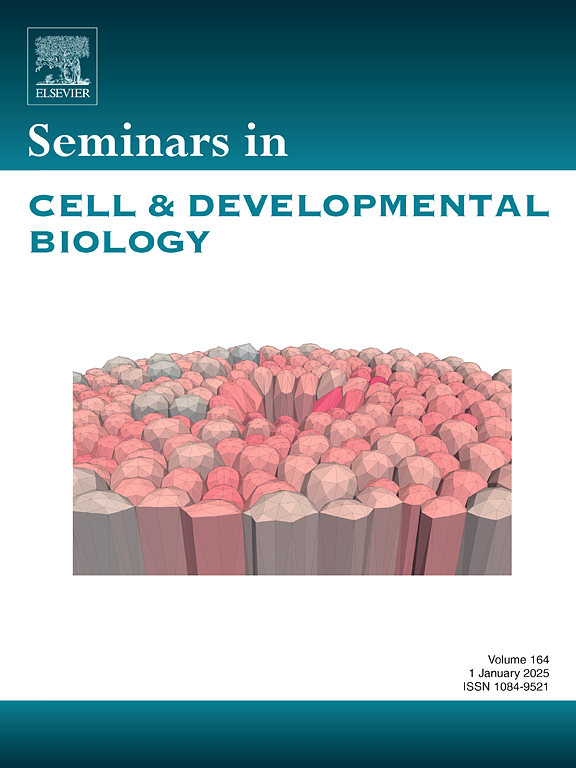通过机械微环境的空间分析捕捉卵巢动力学
IF 6
2区 生物学
Q1 CELL BIOLOGY
引用次数: 0
摘要
近年来,组织力学已被认为不是发育的被动结果,而是可能作为上游调节因子指导细胞功能,如增殖、迁移和分化。在哺乳动物卵巢中,由组织变形、细胞外基质结构和卵泡内压力引起的跨尺度机械信号在生殖寿命期间动态演变,形成了复杂的生物力学景观。尽管越来越多的人认识到它们在调节卵泡发育中的作用,但卵巢微环境的机械信号仍然经常与基因表达和代谢途径的变化分开考虑。此外,卵巢力学微环境的综合制图仍然缺乏,部分原因是评估卵巢力学信息的挑战。在这里,我们讨论了新兴的生物物理技术,包括各种组学技术的最新进展,如何使我们能够跨越多个长度尺度探索卵巢力学。这种整合的方法将为力量传递、基质重塑和细胞信号传导如何在确定的空间壁龛内交叉调节卵巢动力学提供新的见解,为未来理解生殖疾病的机械生物学基础铺平道路。本文章由计算机程序翻译,如有差异,请以英文原文为准。
Capturing ovarian dynamics through spatial profiling of the mechano-microenvironment
In recent years, tissue mechanics has been recognized not as a passive outcome of development but may function as upstream regulators to guide cellular functions such as proliferation, migration, and differentiation. In mammalian ovaries, cross-scale mechanical signals arising from tissue deformation, extracellular matrix architecture, and intrafollicular pressure dynamically evolve over the reproductive lifespan, contributing to a complex biomechanical landscape. Despite increasing recognition of their role in regulating follicle development, mechanical signals from ovarian microenvironment are still often considered separately from changes in gene expression and metabolic pathways. In addition, comprehensive mapping of the ovarian mechano-microenvironment remains lacking, in part due to challenges in assessing mechanical information in ovaries. Here we discuss how emerging biophysical techniques, including the latest advancement in various omics technologies, allow us to probe ovarian mechanics across multiple length scales. Such an integrated approach will provide new insights on how force transmission, matrix remodeling, and cellular signaling intersect within defined spatial niches to regulate ovarian dynamics, paving the way for future understanding of the mechanobiological basis of reproductive disorders.
求助全文
通过发布文献求助,成功后即可免费获取论文全文。
去求助
来源期刊
CiteScore
15.10
自引率
1.40%
发文量
310
审稿时长
9.1 weeks
期刊介绍:
Seminars in Cell and Developmental Biology is a review journal dedicated to keeping scientists informed of developments in the field of molecular cell and developmental biology, on a topic by topic basis. Each issue is thematic in approach, devoted to an important topic of interest to cell and developmental biologists, focusing on the latest advances and their specific implications.
The aim of each issue is to provide a coordinated, readable, and lively review of a selected area, published rapidly to ensure currency.

 求助内容:
求助内容: 应助结果提醒方式:
应助结果提醒方式:


